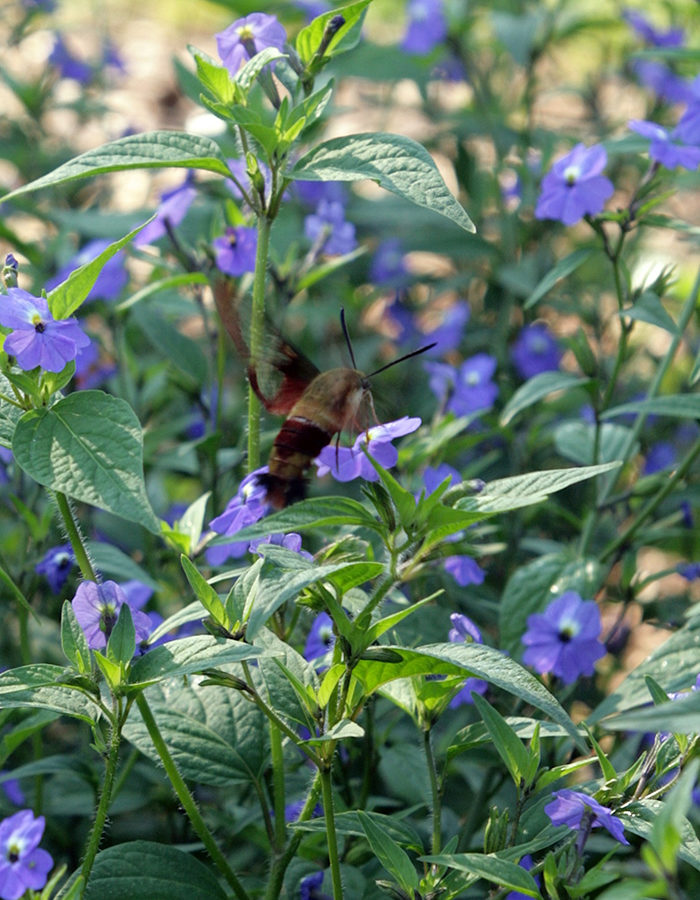
Come August, we gardeners are allowed a break. It’s too hot and generally too dry to plant; the weeds slow down, and deadheading is optional. But even as we abandon the garden for a stack of summer reading, pollinators keep working at our plants, storing food for winter and tanking up for migration.
Honeybees are nonnatives but are highly valued for being efficient food-crop pollinators, easily domesticated, and gracious about sharing surplus honey. Individuals will sting to protect their hive, but swarms that split from overcrowded colonies are docile until they find a new home. If not captured and rehoused by beekeepers, honeybees will construct wild hives in hollow trees and sometimes, inconveniently, within building walls.
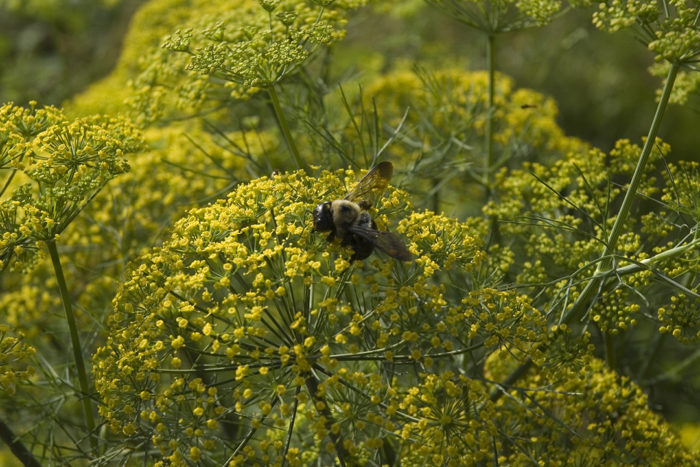
Bumblebees are actually superior pollinators because they can contract their flight muscles to dislodge sticky pollen. Thank bumbles for buzz-pollinating tomato, eggplant, potato, and blueberry crops. Queen bumblebees hibernate in leaf litter—so don’t be overly tidy with fall cleanup—and emerge in spring to start a colony of workers in an abandoned rabbit’s nest or tree cavity.
Carpenter bees resemble giant bumblebees with shiny rather than furry abdomens. In early spring, females drill nesting tunnels in unfinished wood. To prevent damage to your house and outbuildings, keep your trim painted, and hang blocks of wood under the eaves and along soffits.
Mason bee species forage on a wide range of flowers and nest aboveground in abandoned carpenter bee nests, beetle tunnels, and hollow stems. Mason bee houses constructed of bamboo or cardboard tubes are widely available from garden suppliers.
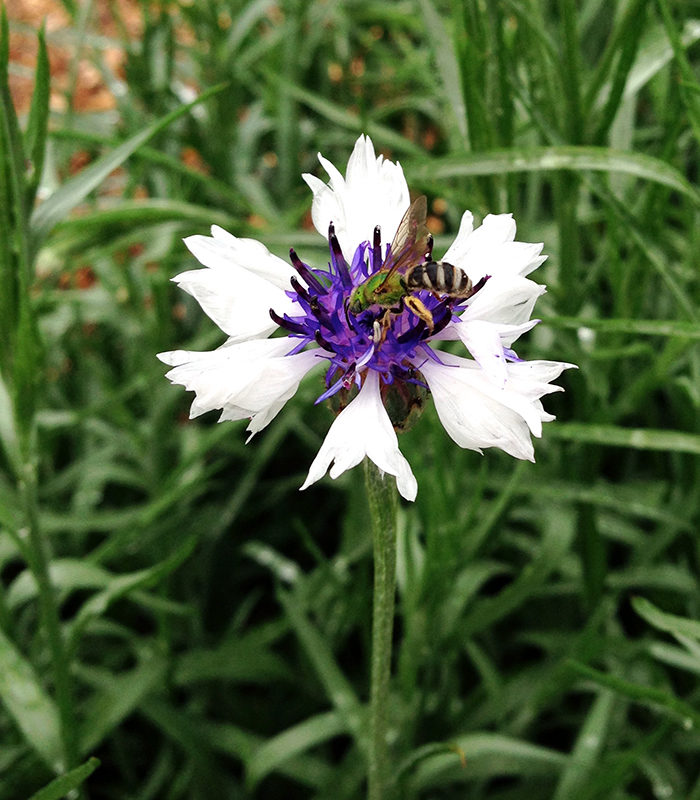
Sweat bees, so called for being attracted to the salt in our sweat, are ground nesters. Green sweat bees have gorgeous metallic green thoraxes and transport pollen packed onto hind-leg “pollen brushes.”
You’ll know you have leafcutter bees in your garden if you spot foliage that looks hole punched. Like mason bees, leafcutters mostly nest in aboveground cavities and glue cocoons for their brood out of circular leaf pieces.
The hummingbird moth, which looks like a bizarre bumblebee-hummingbird hybrid, hovers over flowers while sipping nectar through a long proboscis. Females lay eggs that grow into horned caterpillars that feed on foliage and, if they survive us gardeners and predation, spend the winter cocooned in leaf litter.
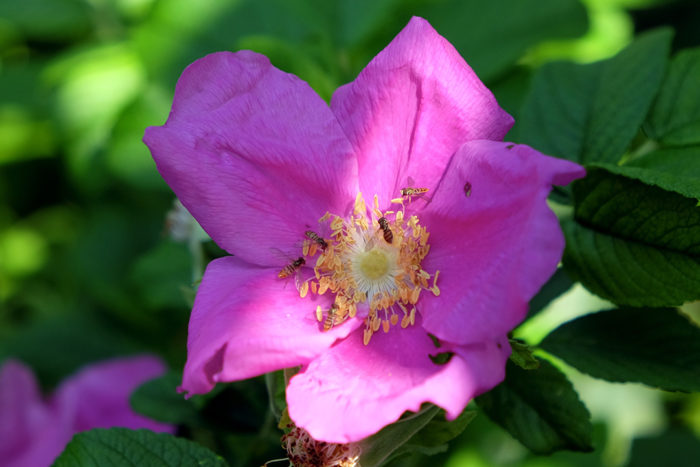
Syrphid or hover flies are my garden’s tiniest pollinators. Adults forage on nectar and pollen, but as larvae they feed on aphids and other insects. This is an excellent reason to ditch the pesticides and let nature maintain the balance.
Even wasps do their part. Adults aren’t the greatest pollinators, though they do forage for nectar and pollen, but they are welcome in my garden for parasitizing and controlling other insect populations.
Butterflies and hummingbirds are also especially busy in late summer. And none of them will be offended if you kick back and watch them work.
—Kristin Green is author of Plantiful: Start Small, Grow Big With 150 Plants That Spread, Self-Sow, and Overwinter. She gardens in Bristol, Rhode Island.
Fine Gardening Recommended Products

Attracting Beneficial Bugs to Your Garden, Revised and Updated Second Edition: A Natural Approach to Pest Control
Fine Gardening receives a commission for items purchased through links on this site, including Amazon Associates and other affiliate advertising programs.

Lee Valley Mini Garden Shear Set
Fine Gardening receives a commission for items purchased through links on this site, including Amazon Associates and other affiliate advertising programs.
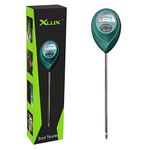
XLUX Soil Moisture Meter
Fine Gardening receives a commission for items purchased through links on this site, including Amazon Associates and other affiliate advertising programs.
- Simply insert the moisture meter into soil and you'll get the test result instantly
- Single probe, less hurts to the roots, doesn't dig up too much soil after test



















Comments
Log in or create an account to post a comment.
Sign up Log in